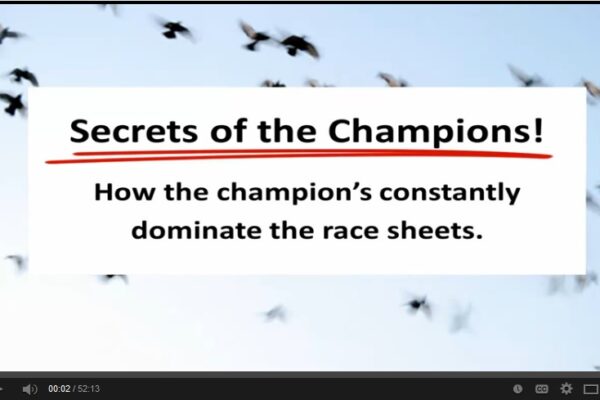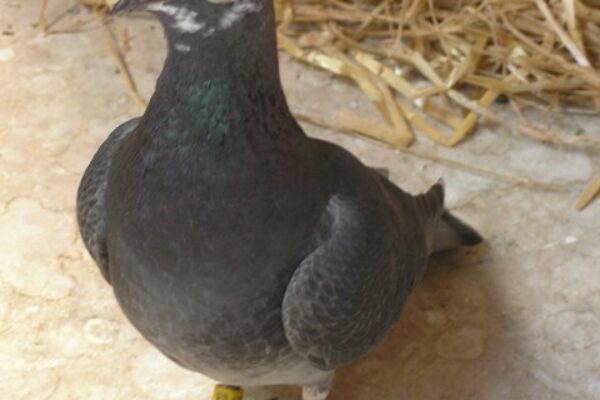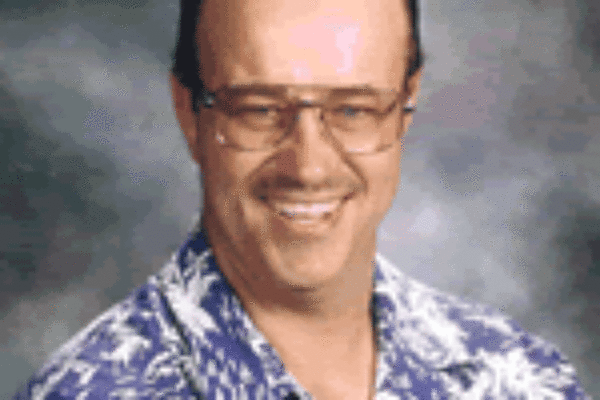Q&A with Pigeon Racing Champion Jim Greelis
 Jim, you have been a competitive and successful flyer in the Omaha Racing Pigeon Association. You won the distinction of having an Elite AU Registered Champion Certificate awarded to one of your birds, AU 04 GREELIS 0405 a Blue Check WF Hen with a score of 160.32 pts. In the Husker Hawkeye Combine, NE/IA Combine and the ORPA, there are many competitive flyers and it’s an achievement to produce and handle a single bird to have that kind of performance.
Jim, you have been a competitive and successful flyer in the Omaha Racing Pigeon Association. You won the distinction of having an Elite AU Registered Champion Certificate awarded to one of your birds, AU 04 GREELIS 0405 a Blue Check WF Hen with a score of 160.32 pts. In the Husker Hawkeye Combine, NE/IA Combine and the ORPA, there are many competitive flyers and it’s an achievement to produce and handle a single bird to have that kind of performance.
Q: What kind of system were you flying her such as natural, widowhood, celibate, etc?
A: I flew her on a natural system with her sitting on 10-day eggs.
Q: What kind of pedigree background did this pigeon have?
A: She was bred out of Grondelaer cock and a Janssen-Boers hen. Neither of the parents ever were raced but they were out of proven stock from good friends.
Q: What races qualified for this award?
A: I only submitted her results at the 400, 500, 600 and they were:
1st 400mi. – 9 lofts, 88 birds on 5/12/07
1st 400mi – 13 lofts, 81 birds on 5/17/08
3rd 400mi – 13 lofts, 104 birds on 5/14/05
13th 500mi – 52 lofts, 324 birds on 6/7/08
14th 500mi – 58 lofts, 544 birds on 6/2/07
2nd 600mi – 44 lofts, 356 birds on 6/28/08
3rd 600mi – 23 lofts, 144 birds on 6/23/07
Q: What other successes have you had racing pigeons?
A: Although I have never had any other registered AU Champions I have had club and combine champion birds a few times. I have won the Midwest Classic once and finished second twice. I’m still working for an average speed award. In WinSpeed the AU has a Master’s Loft award at the club and combine level that a small team flyer can compete for and that is one I would like to pursue. A flyer that ships a lot of birds has to diploma a lot of birds to be competitive for this award.
Q: Do you specialize at any distance or are you competitive for all distances?
A: My favorite has always been the long distance races in both old and young birds. I have had success at both long and short distances, but I would like to work on the middle distances where the bulk of our old bird schedule. In Omaha we are fortunate to be able to fly two races (middle and a long distance) on most of our old bird schedule and I miss it when we fly only one race any particular weekend.
Q: Do you fly any special system for young birds, lights, darkness, widowhood?
A: In the past I flew the light system with some success and found it’s easier for the working man to do because you don’t have to close up your loft for part of the day. The last two years I have worked with the dark system and the birds have been more competitive. Either system still requires some motivation and I chose to separate my cocks and hens with the cocks getting nest boxes and the hens a standard box perch. After the old bird season ends, I will remove the old bird team from their section of the loft with the nest boxes and open a door between the old bird section and the adjacent young bird section so the young birds can begin taking boxes and feel free to mate up. Right around the first young bird race I will separate the sexes throughout the week and bring them together just before shipping them for motivation.
Q: What is your preferred system for competing in old birds?
A: Because of loft size constraints I have to fly a natural system, but if that was not an issue I would fly a double widowhood system with a separate team of hens sitting on 10-day eggs. These hens come into great condition and are really motivated to come home to their eggs.
Q: How do you prepare for short, middle and long distance races?
A: The preparation differences are mostly in the feeding and training and I have two old bird teams: middle distance and long distance teams. Short and middle distance old bird races are not fed any corn as a rule. This rule is changed if you know that there will be a head wind for a fair portion of the race course and the time on the wing is going to be extended beyond what normally would be flown. Training for the short and middle distances is twice a week (once at 25 miles and 45 miles) and loft flown on non training days and rested on shipping day. I prefer to train on Monday and Wednesday for a Saturday race. Long distance races the birds get corn added to their feed. The weekend before a long distance race I will give them a long toss (60-80 miles) and I’m not particular about which weekend day. I try to do similar race preparation things with my young birds as I’ve done with my old birds with the exception they need more training before the season starts and I like smaller group tossing to build the young pigeon’s confidence and that seems to reduce losses during the race season.
Q: What do you look for to know your pigeons are coming into form?
A: I think most everyone looks for a pick non-scaly breast skin, bright white wattle, and droppings that are properly formed, but I think the best sign is how they are training and loft flying. If they are making good training times and they are loft flying well at home they are coming into form and the race results confirm it. Whether it is old birds or young birds if they are willing to fly 45-60 minutes when there is humidity in the air the birds are telling you that they are feeling good. When they will fly 60-90 minutes when the humidity is low you know they are right.
Q: Do you compete for average speed? If so, what are your thoughts on average speed?
A: I like to fly for average speed in old birds, but it takes two good 600 mile performances to win it in our club and combine. As I travel around the country and talk about our old bird race schedule, people marvel at all of the long distance races we get to fly. We probably fly one of the most challenging, if not the toughest race schedules in the country. It’s pretty special and allows us to compete for national awards that we wouldn’t otherwise be able to compete for. In young birds, I don’t put the same effort into average speed because you would need to have a larger team than by 45 bird team to competitively fly it. I also seem to have to take some weekends off to travel for work or the AU and that takes me out of young bird average speed.
Q: Do you fly any specific strain or family of pigeons? What are your thoughts on strains versus families of racing pigeons?
A: I’ve gotten away from strains of birds and concentrated on winning families of birds that are performance based. I am looking for either families that have performed at the distance or in futurities since I send out to quite a few of them.
Q: What would be your advice to a new flyer when it comes to acquiring stock birds?
A: Go to someone flying successfully on your race course and buy some late hatches off of his best breeders or flyers. This person does not have to be someone in your club or combine, but flying the same or similar race course. For example, Kansas City, Topeka and Wichita fly the same race course as I do but they don’t fly in my combine. Their birds fly in the same weather conditions as my birds do. The mother of my #405 was a gift from a good friend out of Kansas City. Also, I would tell a new flyer to not get caught up in all of the fancy names given to birds by all of the feather merchants. They tend to be overpriced and don’t necessarily do well on every race course.
Q: How did you get started in racing pigeons? How long have you been racing?
A: In 1973 my grandfather got me started in racing pigeons and gave me my first birds and clock. I still have that old wooden Benzing and just a smidge of his old bloodline in one hen that was a 250 mile race winner in 2005 or 2006. I have stepped out of the racing scene a couple of times when work moved me to the west coast and following a divorce, but have always stayed connected to the birds through the magazines or volunteering through the AU or at the club level.
Q: Did you have any mentors in the sport at were important to you? If so, what areas of racing did they help you the most with? (Racing, training, health, etc.)
A: Good question and there have been several mentors. I learn from everybody by listening to what they think and asking lots of questions. My ability to get around the country has allowed me take good ideas and methods from many different sources and blend them into a ‘best practices’ approach of handling. If I began listing names of those who were helpful I would surely leave someone off that is well deserved in being mentioned. I will however say that my own local competitors are avid readers and study the sport thoroughly and they are just as helpful in sharing ideas and testing theories.
Q: How do you train young birds and old birds?
A: I began to answer this question earlier but I will tell you more about young birds. I like to begin my young bird training in earnest after the July fireworks subside. I start with short tosses that are really basket training and building confidence. These are one to two mile tosses that are really nothing that the birds that have been ranging haven’t seen before. I will then work them out 4, 6, 8, 10, 15, 20, 25, 35, 45 miles and I would prefer to go twice at each station if time allowed but often doesn’t. Any distance that they struggle with I will do again before moving on. I will also vary the direction a little bit from SSE to SSW. I always seem to have some late hatches off of my best couple of pairs (that I was reluctant to toss their eggs) that need to train and they get an abbreviated version of the same and are moved right out. In 45-50 days I had them flying from 137 miles with the futurity birds and didn’t lose any of them. I should mention they were a small group of 4-6 birds and were often released as a small group so that may have helped.
Q: Do you vaccinate and if so, what do you vaccinate for?
A: PMV, Paratyphoid and Pox.
Q: Do you believe in medicating? Do you try to cure sick birds? Do you use preventive medication and if so, what do you treat for?
A: Yes I believe in medicating when I’m preparing to breed and/or race, and when I’m racing. I don’t often try to cure a sick young bird because they have rarely ever amount to anything. I have had a race bird return and be run down and bounce back to race well, but not a young bird that got sick before the races. I suspect those young birds that get sick before the races just don’t have the strength in their immune system or constitution.
When I’m racing I rotate my medication program to treat for cocci, then canker and then respiratory. The specific medications will vary as the years goes on, but the process is the same. Each week when racing, my birds are getting exposed to something in the race basket so each week on Monday and Tuesday they are treating for one of the three previously mentioned maladies.
Q: What signs to you look for to know your pigeons are in good health?
A: Good droppings are the first sign I look for and there are photo examples in all of the good books on the market if someone needs some help in that area. I want to see a chalky white wattle and the feathers should be soft and silky when I handle a bird. The bird should not have any lice, mites, etc. if I have been doing my job correctly. There should not be any sneezing and the birds should want to fly when turned loose.
Q: What do you think is important in the construction of a quality racing loft?
A: The amount of airspace per bird, the ability to regulate airflow, temperature and lights, plenty of open perches and nest boxes for your birds, the ability for the birds to get out in an aviary and bathe periodically with good sun exposure, and be able to keep predators away from the birds so they are not afraid of their home. I can think of two examples in 2008 where either a hawk or critter got inside the loft and killed some birds.
Q: At the end of the season, what selection criteria do you use to determine who to retain and who to eliminate from the team, for both young birds and old birds?
A: The race sheet helps to determine what birds I keep from one old bird team to the next. Good birds come in many different shapes and sizes and every year some birds on the bubble don’t make it. I prefer not to eliminate an old bird from the team until it has flown as a two year old. That way I have had three race seasons to evaluate its potential. Its really unfair for my young birds because I fly a small team of old birds and there are few open spots on the team so sometimes the brother or sister of a performing old bird racer gets more consideration than it should but again the young bird race results are a strong selector of who is going to compete next year.
Q: What selection criteria do you use for choosing/acquiring breeders? After you have bred from a stock bird, what selection criteria do you use to evaluate them as breeders?
A: The first criteria is what do I know about the fancier that I would be acquiring birds from? What is his race record at the distance I am interested in? Has his birds flown our race course and done it at the top of the race sheet. The most important criteria has to be performance. I can go to an auction and pick out the best handling bird with lots of potential but I can’t see what’s in that bird’s heart that is going to drive it home. In 2007 and 2008 the champion old bird in the Omaha Racing Pigeon Association were not the best handling birds but rather they were the best athletes and happen to be great middle distance birds. To look and handle them you would not necessarily pick them as breeders but you would be missing the boat not to want to have their children on your race teams.
Q: If you had any special advice for the novice fancier, what would it be?
A: Big teams of birds are not always better if they lead to overcrowding of birds. If the birds are not happy in the loft they are not going to be in a hurry to get home. It also costs less to keep fewer birds and you can be competitive if you start with performance based birds. Establishing friendships with good flyers will lead to good birds being made available.
Q: What vision do you have for your future endeavors in racing pigeons?
A: Keep pushing my local and regional competitors for a position at the top of the race sheets. Help lead a team of club members and host the 2013 Midwest Convention and make Omaha a regular stop on that tour. Continue to represent the AU and our region on a national front. Promote the our sport in a positive light to the general public through talks at schools and other public forums.
Q: You have researched and written some great articles as the AU Historian and have proven to be an asset to the sport beyond that of a competitive flyer. How did you end up getting involved in this aspect of our sport?
A: I have always wanted to give something back to the sport and somehow make better for the next generation. In 1990 when Rick Phalen lived and flew in Omaha, he was an AU Zone Director and I asked him if the AU needed any help on any projects that I could volunteer for. They were looking for someone to help with the Help-A-Beginner program so I took that on and met Dr. Frank Greenhall. One thing led to another and I was asked to be their Publicity Chairman and write about the AU and its members. With that position I was able to attend the AU’s meetings and get to know the different board members over the years. After awhile I became their Historian to help preserve the sport’s history and stories of the pigeoneers that served in the war, as well as legends in our sport.
Q: What do you enjoy most about this sport?
A: The birds and the friends I have in the sport. Watching a club work together as it should and having fun doing it.
Q&A with Pigeon Racing Champion Jim Greelis by Domanski Family Lofts









This was a great read. It’s articles like this that keep me excited about the racing sport. To be able to compare a knowledge, successful racing pigeon legions methods to my own is next to priceless. It encourages me to continue moving forward in the sport. Also this article confirms that I’m on the right path.